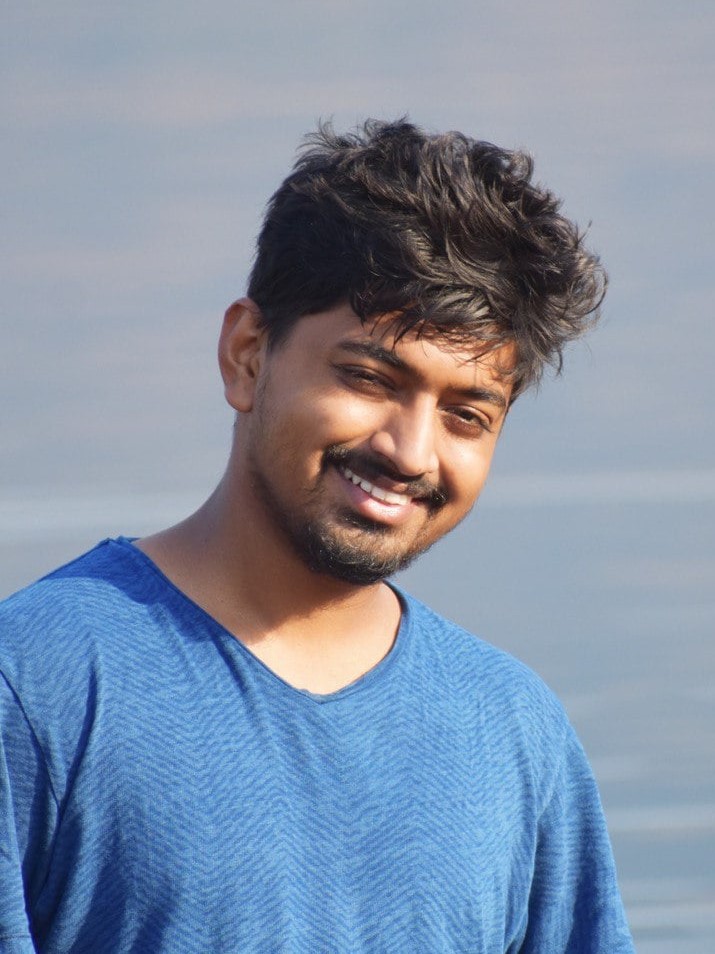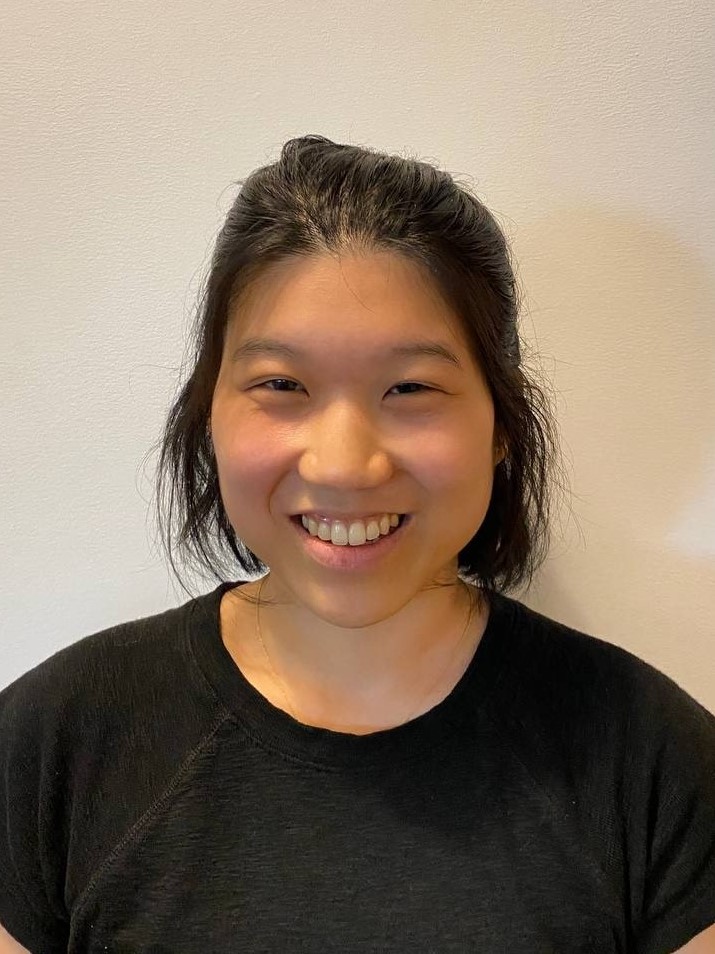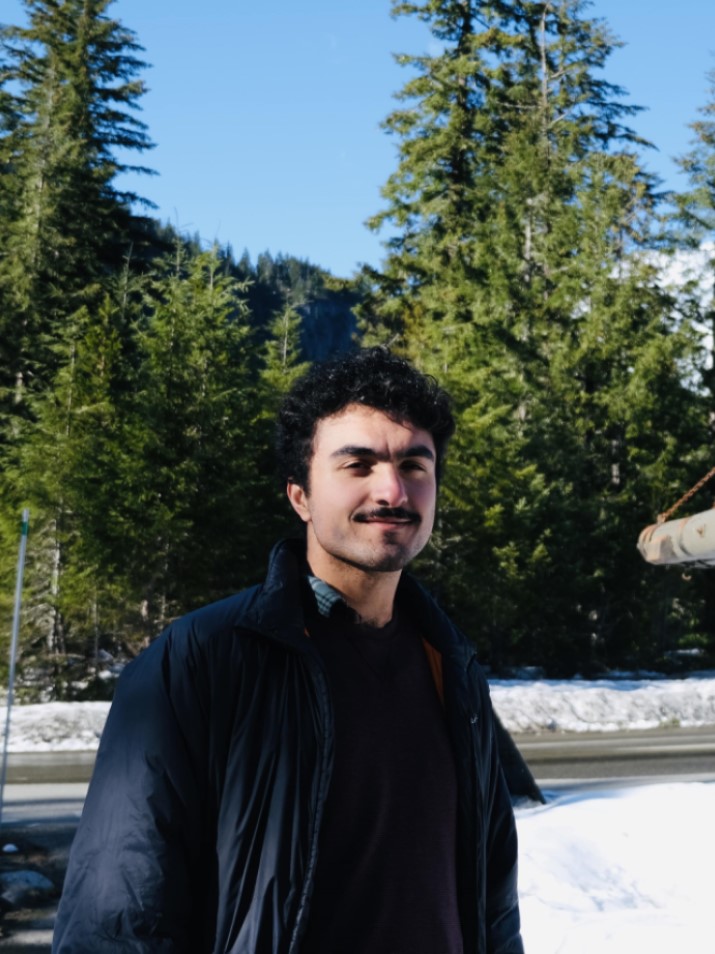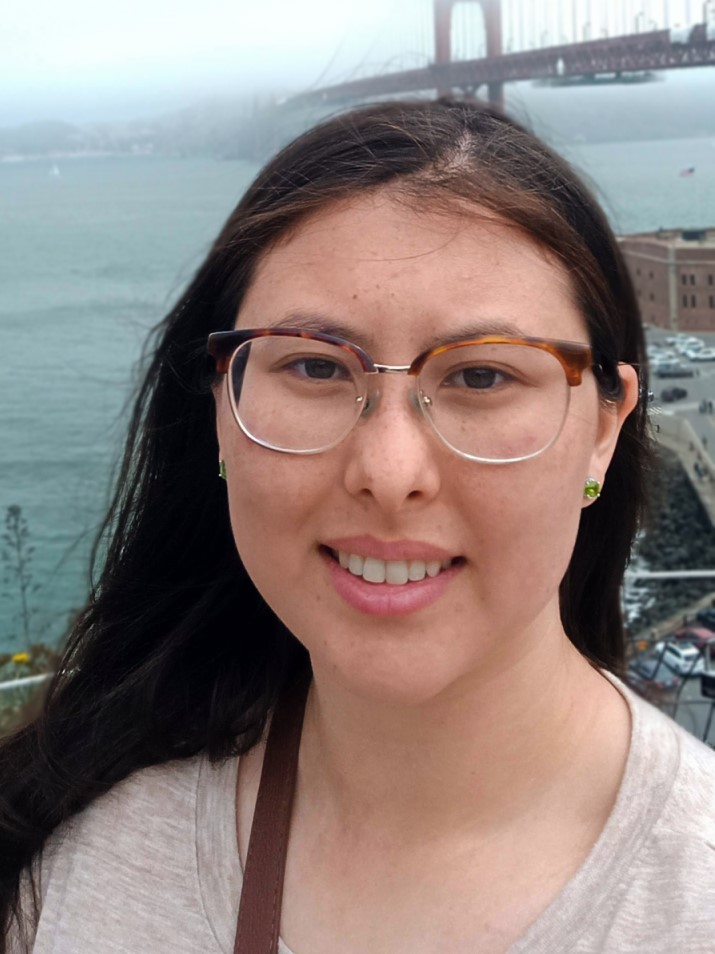New Science 2022 Summer Fellowship
There is a wealth of value in the ideas of young scientists. They often have worthwhile projects which mainstream structures do not give them tools to act upon. Providing opportunities to realize these ideas is a core part of our thesis for accelerating scientific progress.
Our first program is a fully-funded, summer research fellowship for young scientists. We created this program to give fellows open latitude to pursue proof-of-concept research projects based on ideas that are either too early to be funded by a traditional grant, or otherwise fall outside the scope of typically funded research. In existing programs, young people with brilliant ideas may be given broad freedom in their research, but otherwise lack day-to-day support (or are paired with a more experienced scientist to work on someone else’s ideas). In our summer fellowship program, we provide an alternative structure.
We hope that the independence and support offered in this program will have long-lasting impacts, expanding both the ambitions and breadth of possible questions that fellows go on to pursue (e.g. beyond their advisor’s lab or mainstream trends). Summer fellows will continue to be a part of New Science after the fellowship, and their input will appreciably shape future directions.
Through this program, we are also learning an extraordinary amount about how best to run alternative research structures. We expect that this fellowship will spark many new insights and reveal avenues by which to accomplish our mission of building the 21st century institutions of basic science.
2022 Fellow Projects
Can we recreate an independently functional chloroplast?
Roughly 1.5 billion years ago, a free-living photosynthetic cyanobacterium was likely captured by a eukaryotic cell. That cyanobacterium was domesticated, morphing into the modern chloroplast through a gradual relocation of chloroplast genes to the host cell nucleus. With the advent of scalable DNA editing, it may be possible to direct gene transfer between the organelles in the reverse direction to recreate an independently functional chloroplast. Kian will use genomic editing, computational phylogenetics, and cell-free expression systems to investigate this possibility.
Can we design bacterial cells that helpfully engineer other bacterial cells?
Naturally occurring microbial communities, such as the microbiome, accomplish a range of diverse functions; they self-regulate their populations and produce vitamins and other biocompounds. Yet, it’s extremely difficult to extend their functions with traditional bioengineering, because cells, often, must be isolated from their environments before they can be modified. Riley plans to repurpose a bacterial mechanism, conjugative plasmids, to create a novel method for cells to engineer-in-place the cells surrounding them. This project’s goal is to develop cells that provide other cells incentive and molecular tooling to behave in ways that enrich the productivity and stability of the microbial community for beneficial applications.
Is it possible to use next-generation sequencing to profile protein binding at scale?
While nucleic acid sequencing technology has matured greatly over the past few decades, there have been fewer changes to approaches for identifying proteins. Katherine had an unusual insight — could advances in DNA and RNA sequencing be used to profile protein-peptide interactions? Through careful design of reagents that couple sequenceable barcodes made from RNA to a library of short peptides, she will develop a method to fingerprint protein samples via next-generation sequencing.
Can we develop pan-SARS therapeutics using custom peptides?
As SARS-CoV-2 variants continue to emerge, existing therapeutics based on de novo synthesis or repurposed drugs are unable to keep pace. By designing small, custom peptides that bind to the SARS spike protein (and its variants), and attaching them to nanobodies that bind with immunoglobulin light chains, Avadhoot aims to develop a general, therapeutic strategy for anti-SARS-CoV-2 therapies. And he has previously developed computational programs to design small peptides that target protein binding sites, based on structural data.
How do human cells distribute labor?
In the billions of years that have elapsed since the origins of multicellularity, cells have exquisitely adapted their metabolisms to work effectively with neighboring cells. ‘Tasks’ are routinely distributed across cell types, even though nearly every human cell shares the same genome. Diana is co-culturing human cells of different types and running metabolomics experiments to understand how metabolisms and their regulation adapt under different conditions, and how such regulatory systems ‘break’ in the context of disease.





What We Offer
Fellows apply with independently-generated ideas. We work closely with each fellow to refine and develop these ideas. Then, we connect fellows with enthusiastic mentors who can advise and host the projects in their lab space. Fellows live and work mainly in Cambridge, MA. They retain complete ownership of their project’s direction, with total intellectual freedom. Each fellow also receives the high-touch support that is needed to best enable them.
Specifically, New Science provides fellows with:
- Help to refine and concretize ideas, in order to attack them as directly and as productively as possible over the summer.
- Lab space in Boston and all required equipment.
- In-lab support from our staff with wet lab experiments, computational, and theoretical work.
- Access to our network of experienced scientists for mentorship and advice.
- Connections with other brilliant, young scientists.
- $5,000/month in project costs.
- $25,000 in computational credits over the summer (if you need them; no cryptocurrency mining 🙂).
- $6,000/month stipend (plus additional $2,000/month in child support per child).
- Research workshops and opt-in social and educational events (hikes, invited talks, happy hours, technique demos, etc.).
Although anyone can apply, this program is best suited for experienced undergraduates, graduate students, lab techs, or people outside of the standard academic path with similar levels of scientific maturity.
Fellows generate and publish Go/No-go proof of concept results within the 3 months.
New Science is a nonprofit focused on basic science. We are not a VC firm, and thus are not interested in the generation of intellectual property, per se. We are interested in basic science ideas that are either too early to be funded commercially or do not have concrete, commercial applications.
Program Structure
The fellowships run for 12 weeks, from the end of May through the whole of August.
About three months before the fellowship commences, each fellow is contacted and encouraged to make concrete plans for their first steps in the fellowship (thus ensuring that all the resources and equipment needed for their project are in place on day one). If there are experiments that can be outsourced before the program begins, we encourage fellows to consider outsourcing them.
Fellows live in Boston for the duration of the fellowship. They work in projects in the lab space and in the office space provided by New Science or a partner laboratory. There is a maximum of two hours per week in mandatory programming, but we also offer regular (opt-in) dinners, hikes, guest lectures, happy hours, etc.
We host three short workshops before and during the fellowships:
- March. A remote workshop to brainstorm and discuss ideas, as well as to meet other fellows.
- Late May. An in-person workshop to prepare fellows to begin work on their ideas.
- Late August. An in-person workshop to think seriously about future directions and collaborations, while writing up results and interpretations.
In the last days of August, we host a Demo Day for fellows to share their summer research, discuss successes and failures, and highlight future plans to an audience of scientists, industry professionals, funding agencies, and policy-makers.
Ideas We Fund
We mainly look for wet lab, computational, and/or theoretical projects in the life sciences. We are especially excited about the intersections of chemistry and biology, physics and biology, statistics and biology, and mathematics and biology.
Funded projects often cleverly apply conventional systems to answer novel questions, or use novel systems to obtain new information about age-old questions. We expect projects of the general form ‘half theory and half experiment (toy models)’ will be best suited for this program.
Projects that extend beyond the scope of any one lab are welcome, and we help fellows seek out additional mentors. We screen applications based on the feasibility and logic of each project.
Resources and Mentorship
For wet lab projects, provide fellows with a dedicated bench and access to all basic lab equipment. For access to specialized equipment and setups, we leverage our broad network of scientists in Boston.
For general mentorship and support (both in-person and remote), fellows can tap into our unique network that includes professors and postdocs at top universities, brilliant scientists working in biotech, as well as our technical staff, independent scientists, and technical experts.
To name just a few of our mentors:
- Sam Rodriques (Assistant Professor, Crick Institute) - Sam has invented a new nanofabrication method, a new approach to sensing neural activity with probes in the bloodstream, and new ways to extract spatial and temporal information from RNA sequencing. He founded the Applied Biotechnology Laboratory at the Francis Crick Institute in January 2021 with the goal of combining bioengineering and entrepreneurship to develop and deploy new biotechnologies that address major unmet needs for biology and medicine. His lab is developing a broad range of technologies, including new AAV viral vectors, new diagnostic technologies for cancer and Alzheimer’s disease, and new ways to map connections between neurons in the brain. He also invents new mechanisms for funding research, such as focused research organizations.
- Ulkar Aghayeva (Postdoc, Columbia University) - Ulkar studies adaptive control and conditioning of the pancreatic endocrine function in mice, and is interested in developmental biology, particularly transcriptional regulation of neuronal development, phenotypic plasticity (polyphenisms) in invertebrates, interdependence of perception and action in phylogeny and ontogeny, and human time perception.
- T. Ben Thompson (independent) - Ben studied planetary science at MIT and Harvard and is interested in software development, computational math, high performance computing, machine learning, integral equations, and earthquake science.
- Lena Simine (Assistant Professor, McGill University) - Lena is broadly interested in developing computational techniques to study disordered molecular systems on a computer. Lena is particularly interested in simulating disordered biological molecules such as some proteins, short sequences of DNA (DNA aptamers), etc. The goal is to predict their properties: 3D structure, ligand binding, dynamics. Applications include but are not limited to drug and biosensor design.
- Erik Hoel (Adjunct Professor, Tufts University) - Erik’s research interests are threefold. First, he investigates fundamental theories of consciousness (like Integrated Information Theory) and their problems and potential. Second, he develops formal mathematical theories of emergence based on causal analysis, which he seeks to apply in the brain and other biological systems using computational toolkits. Third, he works on the Overfitted Brain Hypothesis, which posits that dreams may be a form of data augmentation to assist with learning; a goal of his is to test this hypothesis empirically.
- Pablo Cordero (Data Scientist, Stripe) - Pablo was a computational biologist at Hexagon Bio, where he mined the world’s fungalome for drugs. Before that, he had been a postdoc at UCSC’s systems biology group doing applied machine learning research on single-cell measurements and he did his doctoral work in RNA structure, the genomics of cardiovascular disease, and other things with Rhiju Das and Euan Ashley at Stanford University.
- Ryan Flynn (Assistant Professor, Harvard University and Boston Children’s Hospital) - Ryan has a long-standing interest in the molecular basis of human disease, with a major focus on developing and implementing tools to understand RNA biology. Specifically, he explores features of nuclear, cytosolic, and most recently cell surface RNA biology through RNA modifications, RNA secondary structure, RNA-protein interactions studies. These efforts have uncovered biological features in cancer, infectious disease, and stem cell biology. More recently, he expanded the scope of RNA biology, leading to the surprising discovery that small noncoding RNAs are modified with complex N-glycans.
- Eduardo Beltrame (Scientist, Retro Bio) - Eduardo’s main research interest is on the topic of single cell RNA sequencing (scRNA-seq). During his PhD, he worked on both experimental and computational method development for scRNA-seq, working with machine learning models for scRNA-seq data. He’s also interested in 3D printing, society, and international politics.
- Sasha Targ (Head of Research, New Science) - Sasha’s previous work includes methods development for multiplexed single cell RNA expression studies and intracellular interaction dynamics in the immune system. She is interested in extending these approaches to understand how responses to physiological cues are integrated into useful (or detrimental) patterns within populations of cells more generally.
- Ethan Garner (Associate Professor, Harvard University) - Ethan’s lab uses advanced microscopy and since molecule imaging to dissect the mechanisms behind bacterial growth, cell division, and inter-bacteria communication
- Manjari Narayan (Postdoc, Stanford University) - Manjari’s research involves developing statistical methods for interventional neuroimaging experiments where researchers simultaneously perturb neural activity using TMS while collecting measurements via fMRI or EEG. Previously, her research interest included applying tools from statistical decision and estimation theory to analyze algorithms for image processing and restoration.
- Gavin Taylor (IGDORE) - Gavin’s research has focused on using computational methods to derive insights into biological systems and took him from collecting insects in tropical rainforests to imaging them in synchrotrons. He has recently redirected his research towards exploring novel technical countermeasures against viral pandemics.
Our mentors and staff help with:
- Critical thinking / intellectual components / framing of projects.
- Specialized knowledge of topics relevant to fellow projects.
- Technical expertise (practical know-how of the most appropriate methods).
- Low-latency sounding board for results and troubleshooting.
Although we don’t believe there’s anything wrong with getting grants and publishing papers in top journals (and many of our mentors are good at doing these), this is not what New Science will optimize for.
After the Fellowship
Fellows spend the summer working on their proposals. If a project shows promise, we will continue supporting a fellow, either by directly funding follow-on research at New Science (for example, via our 2022 one-year fellowship), or by connecting them with a lab or biotech company where they can continue the research.
Application Process
The application deadline was on 23:59 Pacific Time (UTC-8) on January 19, 2022.
For applications submitted before the deadline, we sent acceptance letters no later than February 19, 2022 and asked fellows to confirm participation by March 1, 2022.
We interview applicants on a rolling basis. The application process consists of 1-2 interviews for applications that pass the first round.
We hope to be able to host people outside of the U.S., but unfortunately cannot guarantee sponsorship of visas. If you personally refer someone who ends up becoming a fellow, we’ll fly you to Boston for the Demo Day in late August.
Submit an Application
Often, potential fellows already have an outline of a project, but are unsure whether it would be a good fit for the program, or whether it is at the appropriate stage of development for devoted funding.
Therefore, if you are considering applying, we encourage you to send us a 100-200 word outline of your idea. We’ll get back to you quickly about whether your proposal could be a good fit.
The application consists of a 3-page proposal (submitted as a pdf). Proposals can include text and figures.
Suggested sections for the proposal are as follows:
- What question/problem are you solving?
- Project description (this often constitutes the largest part of a proposal).
- Potential bottlenecks and pitfalls.
- Brief itemization of needed resources .
- Preliminary progress / validation on this project (optional; we are very interested in early proposals that have little to no preliminary data).
- Proposed timeline.
The project description component should make it clear what the first step in your project is, what you expect to be able to discover (positive or negative) or accomplish over the summer, and anticipated future directions. Your proposal should identify resources (e.g. specific antibodies, cell lines, machines) that will be needed in order for us to ensure access to all required equipment and materials.
We are providing an optional round of feedback on the 3-page proposal draft to all interested applicants. You can send your draft to us via email before submitting the application itself.
Submit your interest in the New Science summer fellowship:
Contact
For inquiries about:
- Joining the summer fellowship as a mentor.
- Joining someone’s project as a technical fellow for a portion of the fellowship (for example, if you have background in physics/cs/other technical area and want to get into bio).
- Collaborating with New Science (lab space, equipment, other resources, etc.).
And about general inquiries about New Science, including joining New Science (we’re hiring for a variety of roles, including the support of the fellowship), please email Alexey.